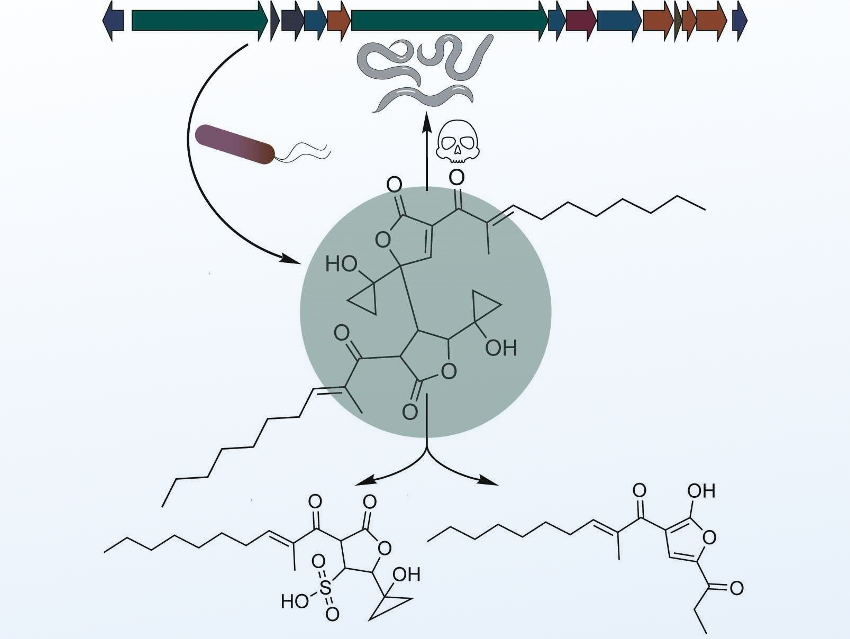Many species of the bacterial genus Burkholderia (previously part of Pseudomonas) can cause serious infections. Previous genetic studies have implicated the bur/mal biosynthetic gene cluster in the species’ virulence. However, the associated metabolite, burkholderic acid or malleilactone, is only moderately cytotoxic.
This apparent contradiction has been solved by Christian Hertweck, Leibniz Institute for Natural Product Research and Infection Biology, Jena, and University of Jena, Germany, and colleagues. The team found the true virulence factors originating from the bur/mal pathway, the malleicyprols. This previously overlooked family of polyketides was discovered by a combination of genetic techniques and molecular network analyses. The researchers engineered bacterial strains which either overexpress the genes of interest or do not make their products at all. Then they compared mass spectra of the bacteria’s metabolites to identify the relevant products of the gene cluster (pictured).
Cell-based assays and a nematode toxicity model identified the rare reactive cyclopropanol ring as a key pharmacophoric group. This group explains the greatly increased cytotoxicity of the malleicyprols compared to burkholderic acid. These results contribute significantly to understanding Burkholderia disease, and they might provide a new target for the development of antivirulence strategies against these bacteria.
- Cyclopropanol Warhead in Malleicyprol Confers Virulence of Human- and Animal-Pathogenic Burkholderia Species,
Felix Trottmann, Jakob Franke, Ingrid Richter, Keishi Ishida, Michael Cyrulies, Hans-Martin Dahse, Lars Regestein, Christian Hertweck,
Angew. Chem. Int. Ed. 2019.
https://doi.org/10.1002/anie.201907324




